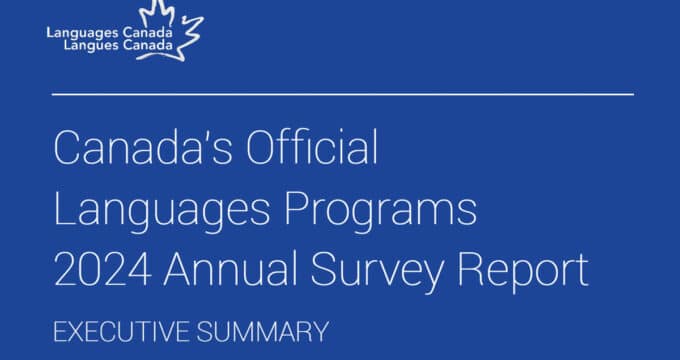Study calls for focus on student satisfaction to boost recruitment
A new study, published in the August issue of the Journal of Business Research, finds that education marketers should increase their focus on student satisfaction as a means of strengthening educational brands and recruitment. In their research paper, "The role of brand attachment strength in higher education," the authors point out, "Recruitment is only the beginning of a long-term relationship that higher education institutions (HEI) need to cultivate, not only while students attend the programmes but also beyond graduation. How universities manage the relationship with the students and how students perceive their institution's brand can have an impact on the attachment with the institution and in turn on students' intentions to engage with the university in the future." The paper draws on an extensive literature review of earlier work in the field as well as a survey of more than 600 current students and graduates of US universities. While the survey results are confined to participants in US higher education, the implications will have a much broader relevance for educators outside the US as well as in other educational sectors. The authors note that building identity through a strong educational brand is essential in today’s increasingly competitive recruitment environment. Their argument in this respect is well supported by current research that demonstrates that perceived quality - that is, the students’ perception of the institution or specific programmes on offer - as well as reputation of an institution or school are among the strongest influences on student choice. In this context, "reputation" sits in a broader frame which refers not only to the prospective student’s perceptions but the perspectives of wider field of observers, including family members, peers, employers, and others. It relates directly to the image that the institution has (particularly with respect to factors such as quality, influence, and trustworthiness) in the wider world. But whereas reputation and perceived quality are drivers of student choice, and where brand image and brand identity can play a part in influencing both, the authors find that neither affects the student’s actual attachment to the institution or school. Rather, they observe that student satisfaction is the main driver of this attachment or feeling of connection. And they conclude by extension that student attachment is in turn a major contributor to brand equity - that is, to the long-term strength of the brand and of the institution’s competitive position in the marketplace. Student satisfaction, they point out, arises directly from the student’s educational experience, and is the result of the institution meeting or exceeding the student’s expectations. This is especially the case for key aspects of the student experience, such as campus climate and instructional effectiveness, that have been shown to have a strong impact on how satisfied a student is overall. One of the central points of the study is that a greater emphasis on driving student satisfaction can lead institutions to improve retention of current students, engagement of alumni, the perception and reputation of the educational brand, and – as a result of all of these – the effectiveness of ongoing recruitment efforts. "HEIs are using similar positioning strategies aimed at boosting prestige, [however, the study results] point to a common weakness in HEIs' marketing strategies. For instance, a university might project itself as "…innovative …professional, and business-like", whereas students may most value facilities, social life, atmosphere, and employment opportunities." "Commitment is a demanding dimension," add the authors, in reference to student attachment, and they call for a greater emphasis on understanding student priorities and preferences, and then on addressing those as fully as possible, as a means of strengthening educational brands. There are a number of implications in this for both recruiters and educational leaders. First, institutions tend to broadly apply a "one-size-fits-all" recruitment and marketing strategy, and the research findings argue instead for more targeted strategies, that focus on building relationships and attachment, with specific student segments. Second, the authors find that institutional branding strategies give too much weight to building the prestige of the institution, whereas strategies focussed on driving student satisfaction can have a much greater impact. They add, "Marketers aiming to attract students…should aim for improved customer orientation, focussing attention on the practical things that matter to students, such as the quality of the courses (and perhaps also the social life). This might be achieved, for example, by investing in courses, student services, clubs and societies, and competing to have these courses and facilities highly ranked and validated or accredited by awards." Third, while student satisfaction is an important driver of attachment, institutions or schools can amplify this connection through targeted strategies that aim to establish a personal bond with the student. The study authors observe that strong institution-student attachments are in themselves an important source of competitive advantage: "HEIs should aim to differentiate themselves by creating and nurturing relationships in novel ways with students, alumni, and other stakeholders, for example using networking events, social media campaigns, customised clothing, regalia, and so on, and building on the connections between the institution and the stakeholders." One of the authors, Dr Eleftherios Alamanos, expanded on this point in a recent interview with Times Higher Education. "The thing universities are missing and tend to get wrong is building on this personal connection. They focus too much on keeping the students satisfied [in some areas], for example by focussing on degree quality and staff - which is absolutely important, don’t get me wrong - but our argument is, if they put efforts into building the personal connection, the results will be even better." That personal connection, he argues, begins by trying to understand what is important to students. In these key respects, the new research being brought forward by Dr Alamanos and his colleagues reinforces and expands on some of the other recent survey results we have seen. For example, global surveys that point to employment goals as a major driver of demand for study abroad, or that indicate a more nuanced role for university rankings in student decision making. The research also underscores the significance of an effectively differentiated brand identity, and of the important role that targeted investments in student services and relationship building can play. These are certainly some of the key threads that are present in both academic and industry research of late, and that we expect will play an important role in shaping strategies and practices for international recruiters going forward.


















